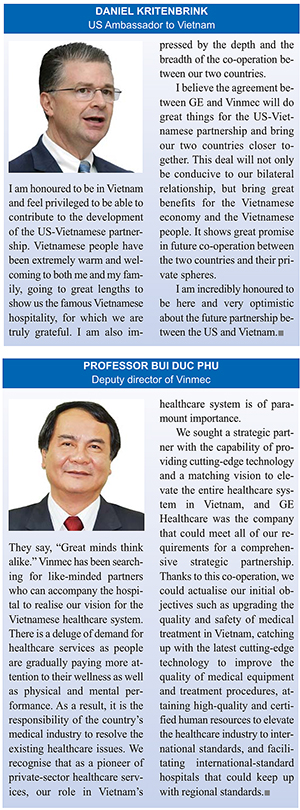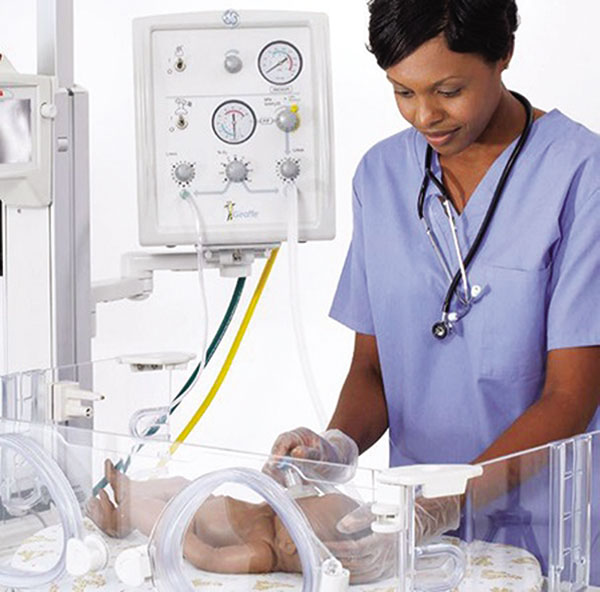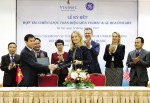GE Healthcare on a mission to innovate Vietnam’s healthcare
 |
What does sustainable healthcare entail, and what benefits does it bring to hospitals and medical institutions in Vietnam and around the world?
The concept of sustainable healthcare was the brainchild of our recently-appointed CEO John Flannery. He came up with the concept after spending time with the GE Healthcare team in India. The experience helped him realise the challenges facing both governments and the private sector. Sustainable healthcare revolves around being able to promptly diagnose patients, provide compatible technology, and genuinely make a difference with an affordable cost structure and clinical pathway.
In the case of Vietnam’s current healthcare landscape, we noticed similar constraints affecting the healthcare system that went beyond technology. Issues like locating capital resources, education and technical skills required us to offer customised solutions for developing economies.
This is how we define SHS (sustainable healthcare solutions), focusing on all the pieces of the puzzle. Thanks to the Vietnamese government and the private sector’s progressive mindset, we found great support in coming up with solutions to help build better medical infrastructure for the population, leading to more positive healthcare outcomes.
What do you think of the current state of healthcare in Vietnam? How does it measure up to the shifting face of demand?
The quality and the affordability of healthcare services, especially as a substantial proportion of the population is not covered by insurance, are challenges. I think one of the main challenges is that secondary hospitals receive a huge influx of patients every day. In some provinces, people often have to rely on one medical centre, which means a lot of commuting. There have certainly been efforts to create more available infrastructure in second-tier cities to tone down the pressure. Resolving this one problem would definitely be a game-changer for the Vietnamese healthcare system.
 |
How much of an impact do you think the continuously increasing population will have on the Vietnamese healthcare system? Do you think this will further constrict the availability of healthcare services?
The rising population will certainly be a challenge, as it will exacerbate the already tremendous unmet demand. And yet, technological innovations and healthcare procedures continue to keep moving forward, while new technology in the industry is not always expensive.
I am heartened by how progressive the Vietnamese government is towards addressing the country’s healthcare challenges and is investing in sustainable solutions. They have put forward one of the best policy mechanisms to expand healthcare access, enhance healthcare quality and control medical expenses.
How does education contribute to driving sustainable healthcare standards in an emerging market like Vietnam?
An example is India – two and a half years ago, we partnered up with the Indian government to establish accredited programmes for healthcare workers and village leaders to identify the most outstanding students who could not afford pursue further education. These students would later be selected for scholarships to pursue medical technology. Once the students graduate, they would be nationally certified with a wide set of skills and start a career in healthcare.
The programme started with only 20 students and we had 1,600 graduates this year. Our goal is to help 10,000 students graduate and find work in the Indian healthcare system, giving them a chance at life-long employment in an important and ever-growing industry.
Both Vietnam and India face a shortage of doctors and healthcare workers to serve a massive population. With a like-minded partner, I am confident that the same programme would work in Vietnam. By providing high-quality medical technology, innovative facilities, and certified healthcare employees, these students will undoubtedly gain access to optimal resources which will significantly benefit their careers in healthcare.
What are some of GE Healthcare’s cost-reduction initiatives and technology solutions that have been implemented in Vietnam so far?
Our recent partnership with Ninh Binh General Hospital is a great example of a cost-disrupting solution that brings quality technology at low cost. Through the successful implementation of our initiative, many more patients can now receive diagnostic treatment without travelling 75-100 kilometres.
For instance, when a person is involved in a road accident, the likelihood of his survival would be significantly increased if the nearest medical facility was nearby.
 |
| GE Healthcare will nurture a new generation of clinicians |
Another example of applying new technologies in the healthcare system is our partnership with Vinmec. We are working with Vinmec to create a healthcare system that meets international levels. We will work closely together to produce the most relevant technology at their facilities, the digitalisation of the healthcare system, as well as compile training modules and skills development programmes for the upcoming Vinmec University of Health Sciences.
We will continue co-operation with other hospitals and organisations as well as the government in our shared vision of bringing better healthcare outcomes to patients across the country.
| Making local healthcare ‘future-ready’ US’ GE Healthcare has joined forces with Vinmec Healthcare system under Vingroup to advance Vietnam’s healthcare standards. Van Mai reports. |
What the stars mean:
★ Poor ★ ★ Promising ★★★ Good ★★★★ Very good ★★★★★ Exceptional
Latest News
More News
- Addressing Vietnam's energy challenges with aeroderivative gas turbines (February 28, 2023 | 09:33)
- How to sprint ahead in 2023’s worldwide energy priorities (February 08, 2023 | 13:55)
- Boosting Vietnam's grid stability through gas turbine technology (November 22, 2022 | 20:02)
- Healthcare trio collaborates to provide thousands of free breast scans (October 27, 2022 | 17:19)
- GE Healthcare's vision for AI-backed radiology (September 29, 2022 | 11:53)
- GE brand trio to shape the future of key industries (July 19, 2022 | 15:35)
- GE unveiling brand names and defining future (July 19, 2022 | 15:16)
- GE: the shortest route towards sustainability (July 18, 2022 | 08:00)
- Be proactive in an uncertain world (May 20, 2022 | 11:40)
- GE secures first 9HA combined cycle power plant order in Vietnam (May 16, 2022 | 17:06)



















 Mobile Version
Mobile Version